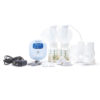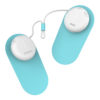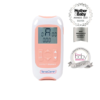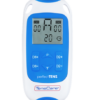How a Feeding Schedule Develops (2023)


Watch Your Baby, Not the Clock: How a Feeding Schedule Develops
This shouldn’t come as a surprise, but every baby is different. That means every baby will have a different feeding schedule. Unfortunately, they don’t come with a personalized feeding schedule pre-programmed either. It’s something the two of you will develop during the learning period of the first four to six weeks. During this time your body builds up its milk supply and you learn your baby’s hunger cues.
What to Look for Instead of at the Clock
The Public Health Agency of Canada recently released guidelines to help breastfeeding mothers. One of their recommendations is instead of timing feeds by the clock, look for signs from your baby. Many people think crying is a sign, it is, but crying happens after they have given the other signs and are now upset. Often, you’ll need to calm the baby down before it is ready to feed. Some of the things you should be looking for are:
• Rooting
• Licking lips
• Putting hands to mouth
Babies need to eat often at the beginning. It may be as much as every 1 to 3 hours, or eight or more times in 24 hours, night or day. This helps your body increase its milk supply, help your baby gain back any weight they might have lost in the first few days and it also gives your baby practice at sucking and swallowing.
Night Feedings
Night feedings are important. Just because it’s nighttime doesn’t mean your baby stops being hungry! At night some babies may prefer many short feeds while others will like fewer, longer feeds. Don’t rush your baby, it won’t help; just try and take your time. Your baby should appear content and drowsy after a feeding when they’ve had enough.
As they get older the feedings will start to be longer and the time between the feedings will grow. From about six months on, your baby’s feeding patterns will change as they start to try solid foods. If your baby becomes less interested in breastfeeding after they’ve started to eat solids, try starting with breastfeeding then give them solids. Even when they’ve started eating solid food, breastfeeding is still their most important source of nutrition.





